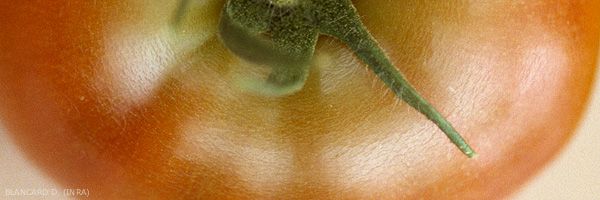
Physiological microcracks in fruit
( russeting )
( russeting )
Symptoms on fruits
Appearance of numerous superficial epidermal microfits, from a few tenths of a millimeter, to one or two millimeters in length, mainly located around the stalk zone of the fruits (figures 1 and 2). Grayish and dull appearance of the affected tissue areas.
Microcracks appear in crops under cover during the ripening phase of the fruits.
Origin of damage
Non-parasitic disease
More limited epidermal elasticity during the ripening phase, not sufficiently compensating for the enlargement of the fruits.
How to cure it
Optimize the factors influencing fruit growth.
The climate
- Avoid excessive day-night thermal contrasts.
- Maintain optimum average temperatures preventing fruit growth from being too fast or too slow.
- Beware of periods of cloudy weather and low light shelters, in which a heat shield is used.
Ferti-irrigation
- Avoid excessive irrigations.
- Do not irrigate during periods of low plant activity (end of the day until the start of the following day).
- Maintain high conductivity in breads.
Plant management
- Maintain an optimal foliage-fruit load balance.
- Do not topping too early at the end of the crop in order to maintain a sufficient fruit load.
- Differences in varietal sensitivity can be observed.





